
Director
Viennale 2022 Trailer
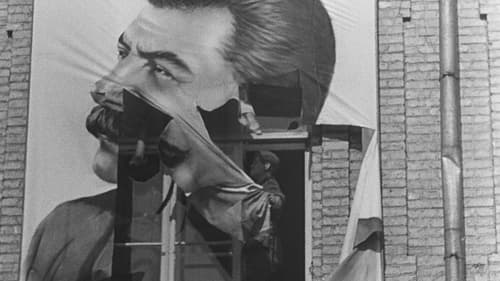
Producer
Сергей Лозница объединился с музеем «Бабий Яр», чтобы собрать исчерпывающее исследование истории киевского урочища, в котором остались навеки похоронены десятки и сотни тысяч человек, расстрелянных нацистами, в том числе огромное количество евреев.

Editor
Сергей Лозница объединился с музеем «Бабий Яр», чтобы собрать исчерпывающее исследование истории киевского урочища, в котором остались навеки похоронены десятки и сотни тысяч человек, расстрелянных нацистами, в том числе огромное количество евреев.

Screenplay
Сергей Лозница объединился с музеем «Бабий Яр», чтобы собрать исчерпывающее исследование истории киевского урочища, в котором остались навеки похоронены десятки и сотни тысяч человек, расстрелянных нацистами, в том числе огромное количество евреев.

Director
Сергей Лозница объединился с музеем «Бабий Яр», чтобы собрать исчерпывающее исследование истории киевского урочища, в котором остались навеки похоронены десятки и сотни тысяч человек, расстрелянных нацистами, в том числе огромное количество евреев.

Editor
The Kiev Trial, also known as the ‘Kiev Nuremberg’, took place in January of 1946 in the Soviet Union, and was one of the first post-war trials convicting German Nazis and their collaborators. 15 criminals, guilty of atrocities, which were later identified by the Nuremberg trials as “crimes against humanity”, faced justice in case No.1679 “On the atrocities committed by fascist invaders on the territory of the Ukrainian SSR.” Using unique, previously unseen, archive footage, Sergei Loznitsa reconstructs key moments of the proceedings, including statements of the defendants and testimonies of the witnesses, survivors of Auschwitz and Babi Yar among them. The film lays bare the ‘banality of evil’ and is devastatingly relevant today, as Ukrainian people are once again being subjected to the violence of barbarian invaders.

Producer
The Kiev Trial, also known as the ‘Kiev Nuremberg’, took place in January of 1946 in the Soviet Union, and was one of the first post-war trials convicting German Nazis and their collaborators. 15 criminals, guilty of atrocities, which were later identified by the Nuremberg trials as “crimes against humanity”, faced justice in case No.1679 “On the atrocities committed by fascist invaders on the territory of the Ukrainian SSR.” Using unique, previously unseen, archive footage, Sergei Loznitsa reconstructs key moments of the proceedings, including statements of the defendants and testimonies of the witnesses, survivors of Auschwitz and Babi Yar among them. The film lays bare the ‘banality of evil’ and is devastatingly relevant today, as Ukrainian people are once again being subjected to the violence of barbarian invaders.

Writer
The Kiev Trial, also known as the ‘Kiev Nuremberg’, took place in January of 1946 in the Soviet Union, and was one of the first post-war trials convicting German Nazis and their collaborators. 15 criminals, guilty of atrocities, which were later identified by the Nuremberg trials as “crimes against humanity”, faced justice in case No.1679 “On the atrocities committed by fascist invaders on the territory of the Ukrainian SSR.” Using unique, previously unseen, archive footage, Sergei Loznitsa reconstructs key moments of the proceedings, including statements of the defendants and testimonies of the witnesses, survivors of Auschwitz and Babi Yar among them. The film lays bare the ‘banality of evil’ and is devastatingly relevant today, as Ukrainian people are once again being subjected to the violence of barbarian invaders.

Director
The Kiev Trial, also known as the ‘Kiev Nuremberg’, took place in January of 1946 in the Soviet Union, and was one of the first post-war trials convicting German Nazis and their collaborators. 15 criminals, guilty of atrocities, which were later identified by the Nuremberg trials as “crimes against humanity”, faced justice in case No.1679 “On the atrocities committed by fascist invaders on the territory of the Ukrainian SSR.” Using unique, previously unseen, archive footage, Sergei Loznitsa reconstructs key moments of the proceedings, including statements of the defendants and testimonies of the witnesses, survivors of Auschwitz and Babi Yar among them. The film lays bare the ‘banality of evil’ and is devastatingly relevant today, as Ukrainian people are once again being subjected to the violence of barbarian invaders.

Writer
Is it morally acceptable to use the civilian population as yet another tool for waging war? Is it possible to justify death and destruction for the sake of supposedly lofty ideals? The question remains as pertinent today as it was at the beginning of World War II, and it is becoming increasingly urgent to answer, as countless tragedies have been caused by unethical political decisions.

Producer
Is it morally acceptable to use the civilian population as yet another tool for waging war? Is it possible to justify death and destruction for the sake of supposedly lofty ideals? The question remains as pertinent today as it was at the beginning of World War II, and it is becoming increasingly urgent to answer, as countless tragedies have been caused by unethical political decisions.

Director
Is it morally acceptable to use the civilian population as yet another tool for waging war? Is it possible to justify death and destruction for the sake of supposedly lofty ideals? The question remains as pertinent today as it was at the beginning of World War II, and it is becoming increasingly urgent to answer, as countless tragedies have been caused by unethical political decisions.
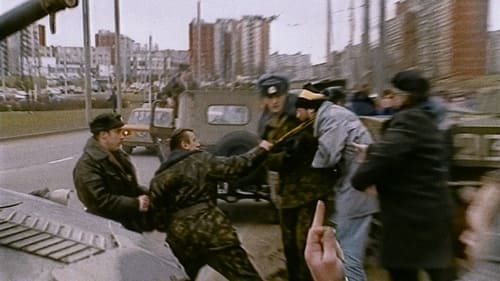
Screenplay
Фильм о Литве с 1989 по 1991 год, в период, когда она отделилась от Советского Союза. Как один из основателей движения за независимость, Витаутас Ландсбергис оказался в центре радикального исторического сдвига. Его проницательные размышления дополняются обширными архивными записями демонстраций, партийных съездов...

Producer
Фильм о Литве с 1989 по 1991 год, в период, когда она отделилась от Советского Союза. Как один из основателей движения за независимость, Витаутас Ландсбергис оказался в центре радикального исторического сдвига. Его проницательные размышления дополняются обширными архивными записями демонстраций, партийных съездов...

Director
Фильм о Литве с 1989 по 1991 год, в период, когда она отделилась от Советского Союза. Как один из основателей движения за независимость, Витаутас Ландсбергис оказался в центре радикального исторического сдвига. Его проницательные размышления дополняются обширными архивными записями демонстраций, партийных съездов...

Writer
A documentary view of the galas of Paris’s Palais Garnier in the 1950s and ’60s.

Director
A documentary view of the galas of Paris’s Palais Garnier in the 1950s and ’60s.

Director
The film shows life in contemporary Sarajevo as reflected through glass covers of the black-and-white photos of its defenders, taken by the Bosnian photographer Milomir Kovacevic in 1992 during the siege of the city.

Director
From an Iranian village to the Palais Garnier, from a hospital in Villejuif in the South of Algeria, voices are raised ... Four filmmakers, Julie Deliquet, Karim Moussaoui, Sergei Loznitsa and Jafar Panahi film songs of women and evoke in their own way, the world in which each of them lives.
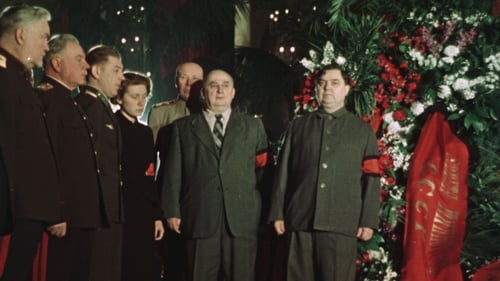
Producer
Похороны Сталина как грандиозный спектакль, обнажающий суть культа личности. Фильм основан на уникальных архивных материалах, снятых в СССР 5 - 9 марта 1953 г, когда вся страна хоронила Иосифа Сталина.

Screenplay
Похороны Сталина как грандиозный спектакль, обнажающий суть культа личности. Фильм основан на уникальных архивных материалах, снятых в СССР 5 - 9 марта 1953 г, когда вся страна хоронила Иосифа Сталина.

Director
Похороны Сталина как грандиозный спектакль, обнажающий суть культа личности. Фильм основан на уникальных архивных материалах, снятых в СССР 5 - 9 марта 1953 г, когда вся страна хоронила Иосифа Сталина.

Screenplay
Каждый год 9 мая в Трептовпарке в Берлине собираются люди. Они приходят с флагами, цветами, плакатами, одетые празднично или в советскую военную форму. Они возлагают цветы к памятнику советскому воину-освободителю, поют, танцуют, пьют. Они отмечают день победы СССР над нацистской Германией. Берлин, 72 года спустя.

Director of Photography
Каждый год 9 мая в Трептовпарке в Берлине собираются люди. Они приходят с флагами, цветами, плакатами, одетые празднично или в советскую военную форму. Они возлагают цветы к памятнику советскому воину-освободителю, поют, танцуют, пьют. Они отмечают день победы СССР над нацистской Германией. Берлин, 72 года спустя.

Producer
Каждый год 9 мая в Трептовпарке в Берлине собираются люди. Они приходят с флагами, цветами, плакатами, одетые празднично или в советскую военную форму. Они возлагают цветы к памятнику советскому воину-освободителю, поют, танцуют, пьют. Они отмечают день победы СССР над нацистской Германией. Берлин, 72 года спустя.

Director
Каждый год 9 мая в Трептовпарке в Берлине собираются люди. Они приходят с флагами, цветами, плакатами, одетые празднично или в советскую военную форму. Они возлагают цветы к памятнику советскому воину-освободителю, поют, танцуют, пьют. Они отмечают день победы СССР над нацистской Германией. Берлин, 72 года спустя.

Producer
Москва, СССР. 1930 г. Колонный зал Дома Союзов. Группа инженеров и экономистов, руководивших советской промышленностью, предстает перед судом по обвинению в подготовке государственного переворота.

Screenplay
Москва, СССР. 1930 г. Колонный зал Дома Союзов. Группа инженеров и экономистов, руководивших советской промышленностью, предстает перед судом по обвинению в подготовке государственного переворота.

Editor
Москва, СССР. 1930 г. Колонный зал Дома Союзов. Группа инженеров и экономистов, руководивших советской промышленностью, предстает перед судом по обвинению в подготовке государственного переворота.

Director
Москва, СССР. 1930 г. Колонный зал Дома Союзов. Группа инженеров и экономистов, руководивших советской промышленностью, предстает перед судом по обвинению в подготовке государственного переворота.

Associate Producer
Военная трагикомедия снята по сценарию, в основе которого – размещенные на YouTube любительские видеоролики с территории, подконтрольной самопровозглашенным в 2014-15 годах республикам на востоке Украины. Загримированная массовка раздает фейковые интервью, от пассажиров междугородного автобуса требуют взятки, а в Новороссии играют свадьбу. Лента состоит из 13 эпизодов-цепочек, которые логично перетекают из одного в другой и воссоздают в игровом кино истории из настоящей жизни на востоке Украины", - говорится в аннотации к фильму.

Screenplay
Военная трагикомедия снята по сценарию, в основе которого – размещенные на YouTube любительские видеоролики с территории, подконтрольной самопровозглашенным в 2014-15 годах республикам на востоке Украины. Загримированная массовка раздает фейковые интервью, от пассажиров междугородного автобуса требуют взятки, а в Новороссии играют свадьбу. Лента состоит из 13 эпизодов-цепочек, которые логично перетекают из одного в другой и воссоздают в игровом кино истории из настоящей жизни на востоке Украины", - говорится в аннотации к фильму.

Director
Военная трагикомедия снята по сценарию, в основе которого – размещенные на YouTube любительские видеоролики с территории, подконтрольной самопровозглашенным в 2014-15 годах республикам на востоке Украины. Загримированная массовка раздает фейковые интервью, от пассажиров междугородного автобуса требуют взятки, а в Новороссии играют свадьбу. Лента состоит из 13 эпизодов-цепочек, которые логично перетекают из одного в другой и воссоздают в игровом кино истории из настоящей жизни на востоке Украины", - говорится в аннотации к фильму.

Screenplay
Молодая женщина по пути на свидание к арестованному мужу встречает различных героев своего времени: от полицейских и правозащитников до проституток и бродяг.

Director
Молодая женщина по пути на свидание к арестованному мужу встречает различных героев своего времени: от полицейских и правозащитников до проституток и бродяг.
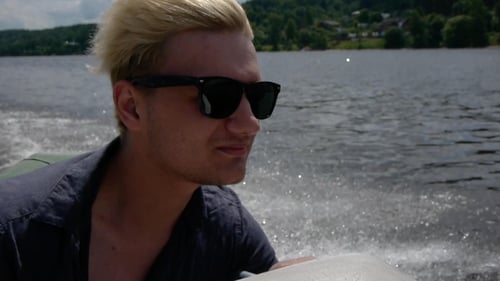
himself
Алексей, молодой человек, находится в поиске себя. Он приходит на кастинг проекта «Реальность», авторы которого предлагают Алексею снимать на камеру свою повседневную жизнь и Алексей с энтузиазмом соглашается. Так он становится героем фильма о самом себе. Алексей открытый гомосексуал и не скрывает своих предпочтений от друзей и знакомых. Единственный человек, который не может его понять — его родная мать. Мы обнаруживаем Алексея на кинофестивале им. Тарковского, где он встречает местного парня Гришу, с которым у Алексея начинается роман.

Writer
Картина «Аустерлиц» снималась на территории бывших концлагерей Дахау, Берген-Бельзен, Равенсбрюк, Заксенхаузен и Дора-Миттельбау, и своим названием отсылает к одноименному роману Винфрида Зеебальда, посвященному памяти о Холокосте.
На самом деле неважно в каких лагерях снимался фильм, суть в том, что из него следует, что люди перестают соотносить увиденное с реальностью. Они начинают посещать концлагеря как очередной туристический аттракцион, забывая о том, что эти места - фабрики по переработке людей в пепел, места страшных преступлений против человечества.
Фильм - кинонаблюдение вызывает у зрителя вопросы: Зачем они туда пришли? Что они там ищут? Как хранить эту память и какие проблемы возникают в результате того, что мы называем меморизация.

Director of Photography
Картина «Аустерлиц» снималась на территории бывших концлагерей Дахау, Берген-Бельзен, Равенсбрюк, Заксенхаузен и Дора-Миттельбау, и своим названием отсылает к одноименному роману Винфрида Зеебальда, посвященному памяти о Холокосте.
На самом деле неважно в каких лагерях снимался фильм, суть в том, что из него следует, что люди перестают соотносить увиденное с реальностью. Они начинают посещать концлагеря как очередной туристический аттракцион, забывая о том, что эти места - фабрики по переработке людей в пепел, места страшных преступлений против человечества.
Фильм - кинонаблюдение вызывает у зрителя вопросы: Зачем они туда пришли? Что они там ищут? Как хранить эту память и какие проблемы возникают в результате того, что мы называем меморизация.

Director
Картина «Аустерлиц» снималась на территории бывших концлагерей Дахау, Берген-Бельзен, Равенсбрюк, Заксенхаузен и Дора-Миттельбау, и своим названием отсылает к одноименному роману Винфрида Зеебальда, посвященному памяти о Холокосте.
На самом деле неважно в каких лагерях снимался фильм, суть в том, что из него следует, что люди перестают соотносить увиденное с реальностью. Они начинают посещать концлагеря как очередной туристический аттракцион, забывая о том, что эти места - фабрики по переработке людей в пепел, места страшных преступлений против человечества.
Фильм - кинонаблюдение вызывает у зрителя вопросы: Зачем они туда пришли? Что они там ищут? Как хранить эту память и какие проблемы возникают в результате того, что мы называем меморизация.

Producer
In August 1991 a failed coup d'état attempt (known as Putsch) led by a group of hard-core communists in Moscow, ended the 70-year-long rule of the Soviets. The USSR collapsed soon after, and the tricolour of the sovereign Russian Federation flew over Kremlin. As president Gorbachev was detained by the coup leaders, state-run TV and radio channels, usurped by the putschists, broadcast Tchaikovsky's "Swan Lake" instead of news bulletins, and crowds of protestors gathered around Moscow's White House, preparing to defend the stronghold of democratic opposition led by Boris Yeltsin, in the city of Leningrad thousands of confused, scared, excited and desperate people poured into the streets to become a part of the event, which was supposed to change their destiny. A quarter of a century later, Sergei Loznitsa revisits the dramatic moments of August 1991 and casts an eye on the event which was hailed worldwide as the birth of "Russian democracy".

Writer
In August 1991 a failed coup d'état attempt (known as Putsch) led by a group of hard-core communists in Moscow, ended the 70-year-long rule of the Soviets. The USSR collapsed soon after, and the tricolour of the sovereign Russian Federation flew over Kremlin. As president Gorbachev was detained by the coup leaders, state-run TV and radio channels, usurped by the putschists, broadcast Tchaikovsky's "Swan Lake" instead of news bulletins, and crowds of protestors gathered around Moscow's White House, preparing to defend the stronghold of democratic opposition led by Boris Yeltsin, in the city of Leningrad thousands of confused, scared, excited and desperate people poured into the streets to become a part of the event, which was supposed to change their destiny. A quarter of a century later, Sergei Loznitsa revisits the dramatic moments of August 1991 and casts an eye on the event which was hailed worldwide as the birth of "Russian democracy".

Editor
In August 1991 a failed coup d'état attempt (known as Putsch) led by a group of hard-core communists in Moscow, ended the 70-year-long rule of the Soviets. The USSR collapsed soon after, and the tricolour of the sovereign Russian Federation flew over Kremlin. As president Gorbachev was detained by the coup leaders, state-run TV and radio channels, usurped by the putschists, broadcast Tchaikovsky's "Swan Lake" instead of news bulletins, and crowds of protestors gathered around Moscow's White House, preparing to defend the stronghold of democratic opposition led by Boris Yeltsin, in the city of Leningrad thousands of confused, scared, excited and desperate people poured into the streets to become a part of the event, which was supposed to change their destiny. A quarter of a century later, Sergei Loznitsa revisits the dramatic moments of August 1991 and casts an eye on the event which was hailed worldwide as the birth of "Russian democracy".

Director
In August 1991 a failed coup d'état attempt (known as Putsch) led by a group of hard-core communists in Moscow, ended the 70-year-long rule of the Soviets. The USSR collapsed soon after, and the tricolour of the sovereign Russian Federation flew over Kremlin. As president Gorbachev was detained by the coup leaders, state-run TV and radio channels, usurped by the putschists, broadcast Tchaikovsky's "Swan Lake" instead of news bulletins, and crowds of protestors gathered around Moscow's White House, preparing to defend the stronghold of democratic opposition led by Boris Yeltsin, in the city of Leningrad thousands of confused, scared, excited and desperate people poured into the streets to become a part of the event, which was supposed to change their destiny. A quarter of a century later, Sergei Loznitsa revisits the dramatic moments of August 1991 and casts an eye on the event which was hailed worldwide as the birth of "Russian democracy".

Writer
Jewish cemetery in Riga, Latvia became a park in the 1960s. Now the park becomes a place for alcoholics and American tourists, but still he last witness of violent history. A film dedicated to Jewish community.

Director
Jewish cemetery in Riga, Latvia became a park in the 1960s. Now the park becomes a place for alcoholics and American tourists, but still he last witness of violent history. A film dedicated to Jewish community.

Director
Seven versions of Riga, the city on the Baltic Sea, and its features as seen by outstanding European film directors: Sergei Loznitsa (The Old Jewish Cemetery), Ivars Seleckis (On Ķīpsala), Audrius Stonys (Riga Boats), Jaak Kilmi (Littering Prohibited!), Jon Bang Karlsen (Cats in Riga), Rainer Komers (Daugava Delta), and Bettina Henkel (Theatre Street 6).

Director
Thirteen European directors explore the theme of Sarajevo; what this city has represented in European history over the past hundred years, and what Sarajevo stands for today in Europe. These eminent filmmakers of different generations and origins offer exceptional singular styles and visions.

Director of Photography
Майдан, который состоялся в Киеве (Украина) зимой 2013/14, это хроника гражданского восстания против режима президента Януковича. Фильм следит за ходом революции: от мирных акций, полумиллиона людей собравшихся на площади Майдан, до кровавых уличных боев.

Editor
Майдан, который состоялся в Киеве (Украина) зимой 2013/14, это хроника гражданского восстания против режима президента Януковича. Фильм следит за ходом революции: от мирных акций, полумиллиона людей собравшихся на площади Майдан, до кровавых уличных боев.

Writer
Майдан, который состоялся в Киеве (Украина) зимой 2013/14, это хроника гражданского восстания против режима президента Януковича. Фильм следит за ходом революции: от мирных акций, полумиллиона людей собравшихся на площади Майдан, до кровавых уличных боев.

Director
Майдан, который состоялся в Киеве (Украина) зимой 2013/14, это хроника гражданского восстания против режима президента Януковича. Фильм следит за ходом революции: от мирных акций, полумиллиона людей собравшихся на площади Майдан, до кровавых уличных боев.

Director
A remote village in the Northwest of Russia. A mental asylum is located in an old wooden house. The place and its inhabitants seem to be untouched by civilization. In this pristine setting, no articulate human voice is heard, and pain is muted. The landscapes and buildings are not so much inhabited as lightly entwined and then passed through by their anonymous residents, like some creeping mist. Phantoms half stuck, half undone in a phantom world—lost persons from a lost society?
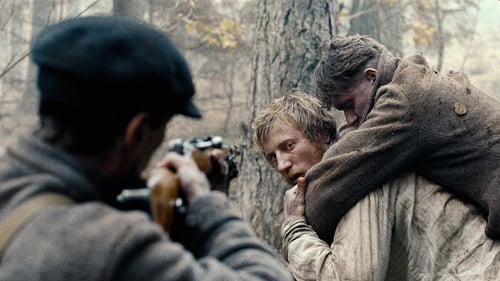
Screenplay
Действие исторической драмы происходит в 1942 году в оккупированной немцами Белоруссии. Путевого обходчика Сущеню ложно обвиняют в сотрудничестве с оккупантами. Два партизана приезжают на хутор к Сущене, чтобы совершить расправу. В надежде доказать свою невиновность Сущеня пытается сделать моральный выбор в аморальных обстоятельствах.

Director
Действие исторической драмы происходит в 1942 году в оккупированной немцами Белоруссии. Путевого обходчика Сущеню ложно обвиняют в сотрудничестве с оккупантами. Два партизана приезжают на хутор к Сущене, чтобы совершить расправу. В надежде доказать свою невиновность Сущеня пытается сделать моральный выбор в аморальных обстоятельствах.

Cinematography
In the middle of June the village of Santo Antonio de Mixoes da Serra in the Valdreu region of Northern Portugal honours its Patron Saint with a very special festival. On this day the local farmers bring their animals to the church – cows, horses, dogs, cats, chickens, rabbits – to be blessed. This ancient tradition is passed from generation to generation, and today, just as hundreds of years ago, animals and people flock up the mountain roads to the church square to become a part of the religious festival. The film is about this miracle.

Director
In the middle of June the village of Santo Antonio de Mixoes da Serra in the Valdreu region of Northern Portugal honours its Patron Saint with a very special festival. On this day the local farmers bring their animals to the church – cows, horses, dogs, cats, chickens, rabbits – to be blessed. This ancient tradition is passed from generation to generation, and today, just as hundreds of years ago, animals and people flock up the mountain roads to the church square to become a part of the religious festival. The film is about this miracle.
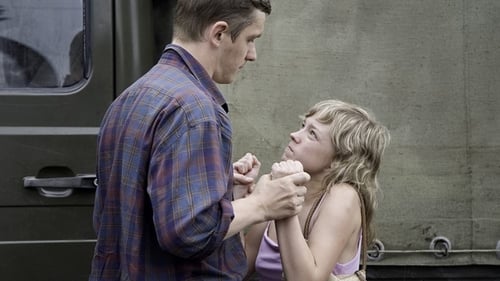
Screenplay
Действие фильма происходит в постсоветской глубинке. Водитель-дальнобойщик Георгий оставляет дома неверную жену и отправляется в очередной рейс. Его грузовик медленно движется к цели, а сам он совершает погружение в мир страха, жестокости и предательства.

Director
Действие фильма происходит в постсоветской глубинке. Водитель-дальнобойщик Георгий оставляет дома неверную жену и отправляется в очередной рейс. Его грузовик медленно движется к цели, а сам он совершает погружение в мир страха, жестокости и предательства.

Director
As he did with his critically-acclaimed "Blockade," a documentary re-creation of the WWII siege of Leningrad, which received its NY theatrical premiere in March 2007, filmmaker Sergei Loznitsa has once again scoured the Russian film archives for "Revue," selecting excerpts from newsreels, propaganda films, TV shows and feature films that present an evocative portrait of Soviet life during the 1950s and 1960s. With scenes taken from the length and breadth of the “Soviet Motherland,” "Revue" illustrates industry and agriculture, political life, popular culture, and technology. The film’s fascinating flow of disparate scenes representing typical Soviet life of the period is, seen from today’s perspective, alternately poignant, funny, and tragic

Director
Just before winter cloaks everything in the Arctic night, a few hours of daylight linger in late autumn in the village of Sumskoy Posad, one thousand kilometres north of Saint Petersburg, in Karelia, on the shores of the White Sea. Linked to the rest of the country by a vague muddy track and a stretch of railway line, the village lives in a suspended and mysterious dimension. This is the Russia of endless forests and potato fields. A few robust and uncompromising characters work calmly there, driven by no vital needs. This is a still happy and cold Russia.

Director
Это фильм об одном дне жизни маленькой рыбацкой артели на Белом море.

Screenplay
The images comprise only of material Sergei Loznitsa found in the Moscow film archives about the siege of Leningrad during the World War II. By providing the originally silent images with a meticulously reconstructed soundtrack, the scenes from everyday life under siege seem to be set in the present. By not intervening in the montage but giving the scenes room to tell a story, the scenes transcend the specific historic events and lead a new life. They do not evoke memories of the past, but become a breathtaking reanimation of reality.

Director
The images comprise only of material Sergei Loznitsa found in the Moscow film archives about the siege of Leningrad during the World War II. By providing the originally silent images with a meticulously reconstructed soundtrack, the scenes from everyday life under siege seem to be set in the present. By not intervening in the montage but giving the scenes room to tell a story, the scenes transcend the specific historic events and lead a new life. They do not evoke memories of the past, but become a breathtaking reanimation of reality.

Director
Мужское и женское, твердое и мягкое, последовательное и прерывное, цельное и фрагментарное — вот тема фильма. Хотя, это всего лишь один день работы на фабрике.

Writer
Winter. A bus stop in a small village. People are waiting for a bus. They talk. Listening to their conversations, the viewer can imagine the world they live in. United by the movement of the camera, the place and the people blend together.

Editor
Winter. A bus stop in a small village. People are waiting for a bus. They talk. Listening to their conversations, the viewer can imagine the world they live in. United by the movement of the camera, the place and the people blend together.

Director
Winter. A bus stop in a small village. People are waiting for a bus. They talk. Listening to their conversations, the viewer can imagine the world they live in. United by the movement of the camera, the place and the people blend together.

Director
This movie is a collection of portraits of residents of Russian countryside. Not a single word. Only long look into the camera. Landscape. Flow of time.

Director
This movie is about a day in life of the settlement for people with mental problems. Located in a peaceful countryside, it conveys an image of a pure, happy place, where people live and work together, in complete harmony. But there is a growing unexplainable feeling of anxiety and hopelessness.

Editor
Trains travel through the night without stopping. The clatter of the carriages quickly disappears, along with the wail of the locomotive. The people at the station are all asleep. But why are they so exhausted ? And what are they waiting for? Set inside an isolated train depot, The Train Station is one of Sergei Loznitsa's most haunting films. It is also one of his most pointed social critiques. In this film, we are brought to a remote train station deep in the Russian woods. It's nighttime. In the distance, we hear the clatter of locomotives. The station, a small wooden building, sits silently, surrounded only by snow and train tracks.

Director
Trains travel through the night without stopping. The clatter of the carriages quickly disappears, along with the wail of the locomotive. The people at the station are all asleep. But why are they so exhausted ? And what are they waiting for? Set inside an isolated train depot, The Train Station is one of Sergei Loznitsa's most haunting films. It is also one of his most pointed social critiques. In this film, we are brought to a remote train station deep in the Russian woods. It's nighttime. In the distance, we hear the clatter of locomotives. The station, a small wooden building, sits silently, surrounded only by snow and train tracks.

Editor
It was filmed in rural Russia, near the city of Smolensk. It shows a small village, where all young people are gone and only older people are left.

Director
It was filmed in rural Russia, near the city of Smolensk. It shows a small village, where all young people are gone and only older people are left.

Director
This movie is about one day on the construction site.

Director
Masculine and feminine, hard and soft, continues and interrupted, whole and fragmented. All that is encompassed by just one day at the factory.

Director






















